RH: Jay, I read your Wikipedia page and what struck me right away was that it gives alot of details about your life and career but it doesn't say how you met Stewart Brand and got involved with the Whole Earth Catalog.
JB: I met him in 1968 when I was teaching at San Francisco State College. I had moved out to California in 1962 and the way I got into teaching was that I was taken off the street by a designer who spotted me after I gave a talk at the annual industrial design summer show. The designer heard me there. I was walking along on Polk Street in San Francisco, and he yelled at me. A 70 year old drag queen was not of much interest to me so I crossed the street to discourage him. I heard huffing behind me and he said, wait wait wait! This old guy with slicked back gray hair said, my name is Wolfgang Lederer and I teach design at San Francisco State College. Our head design teacher just collapsed this very hour and literally had to be taken away by the men in white suits. I need you to come and teach his class. I said, this is short notice. He said, have you ever taught before? And I said, only to a big room full of people who didn't know any better. And he said, come with me, these kids don't bite. So I came with him to see what would happen. It was only a few blocks away by trolley car. He took me to a room full of kids just standing there yacking at each other and waiting for something to happen. He said, give em a try. So I said why don't everybody stand on the tables. And they all did. And I said now stand on your chairs. They all transferred to their chairs. And I said, you've got them all trained, you don't need me for anything. A man who turned out to be a good friend later pushed me back into the room. Some of them are alive and they need you, he said.
RH: What course was this?
JB: Industrial design.
RH: And the students were waiting in the room for a teacher who had just fallen out and the college was fishing for a replacement on the street??
JB: That's right. Yes. This whole process took about 15 minutes. So a few years later I'm teaching and a man suddenly appeared in the doorway wearing a toga, a real toga, barefoot in boot sandals, and he said, are you J. Baldwin? I said, yeah. And he said, do you read catalogs for pleasure? Thinking fast I said yes. He said, give me an example. I said, if something exists and is available to everyone, it's in the New York yellow pages. If it's not available to everyone, it's not in the New York yellow pages. He said, that's an interesting perspective. I want to do a catalog that lets you find anything in the world in three phonecalls. That started us talking, and the price was right - I wasn't going to get rich but it was better than the college paid so I said that sounds good to me. Stewart introduced me to a few people and that did it. We were on the track.
RH: But how did Stewart know about you? Did he hear your talk at the industrial design show, too?
JB: No, but the guy who introduced us had - the guy who pulled me in off the street. My lecture had been a fairly vicious denunciation of a British designer whose name I can't remember now - but it stirred up the audience. I denounced the designer as a fake. I hadn't learned yet how not to burn bridges. I had just come from a design office - my first job - in Ann Arbor, Michigan. I had come to San Francisco looking for a new city to live in because Ann Arbor at the time didn't satisfy me very well. I was newly married and my new wife and I were on the road looking for a new place to live. The reason I went to Michigan was to learn how to design cars. My best friend as a kid was killed in a car wreck that he shouldn't even have been scratched in, because of the car's stupid design. It was a "rocket" Oldsmobile, with a rocket on the horn ring aimed at your heart, so if you hit something hard enough to move 10 inches forward you got pierced in the heart. I graduated from high school in 1951 and University of Michigan in 1955 then I was drafted into the ski troops in Alaska before it became a state.
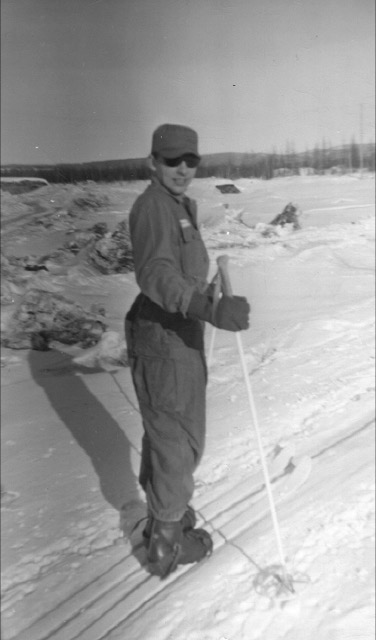
Liz Fial (JB's wife): You went into the ski troops before grad school at UC Berkeley?
JB: Yes. I was drafted into the US Army and served in Alaska. I was raised in metropolitan New Jersey and for the first 10 years of my life I spent my summers in a tiny town in Iowa, the same town where Grant Wood had painted his famous "American Gothic." So I knew about living on farms and was driving tractors at 10 years old. Driving came naturally to me. Also flying.
RH: So before Alaska you went to study car design at University of Michigan?
JB: Yeah. At least what they called car design. At the time, design meant how does it look, and I was an enemy of that. I wanted to know how well does it work. After college and Alaska I went back to Ann Arbor and started working with a fairly radical designer of outdoor gear, Bill Moss. He needed someone to prototype his ideas. It was my first job and I happened to be pretty good at it because in Alaska I had basically lived outdoors for 3 years. I was always an outdoor person.
RH: And you met Bucky Fuller in Ann Arbor?
JB: Yes, I had really good luck. Fuller came to lecture in the Design Department and they put him up in our frat house. I had read an article he wrote for Life Magazine about geodesic domes and it was pretty radical stuff. Compared to him, I was a conventional thinker. I shouldn't have been, but I was. So when he arrived, Fuller said to me while we were talking in the lobby, I need a rest before talking tonight, do you have a room? And it so happened that I did. It had been the fraternity's sewing room, a little bitty room, a walk-in closet with windows. So he spent a few hours resting in my room. Then, during his lecture, the kind of questions he asked the audience, I understood the questions and it turned out that I was the only one in the audience who did. For instance, one of his questions was: can anybody tell me why when you make a right turn in a car and let go of the wheel, the car turns back and heads straight down the road? I told him why, and he said, so you know how to make a car that wants to go straight? I said, that's called stability, sir, and I know how to do that, from building a hot rod in high school.
RH: In the mid-50s, Fuller was working on his Dymaxion car.
JB: That's right.
RH: Was that a bridge between you two?
JB: When Fuller spent a few hours in my room, I had a picture of my car on the wall. He said, I have a car, too, that I made. He showed me a picture of his car and said, what do you think of it? And I said, I think if you blow the back tire you're a dead duck. He didn't want to hear that! But later I overheard him tell a woman he had hired as an engineer that only she and me and two of my friends understood what he was doing. I understood what he was doing all right, and understood what would work better than the suggestions he had. Something I had learned already was that if you don't build the prototype yourself, you're going to miss alot of learning and are bound to spend alot of time later fixing things that don't work right. When I started teaching design my focus was always on making it work, not how it looked. That was the basis of my teaching and my reputation was built on that. You didn't get a good grade from me unless it worked. If it didn't work, it was a fake design. I taught for 16 years at the California College of Arts and Crafts in San Francisco, right up until last year, which was one of the ten design schools I've taught at. That was my last teaching job.
 Car Life's cut-away drawing of Fuller's 1933 Dymaxion car |
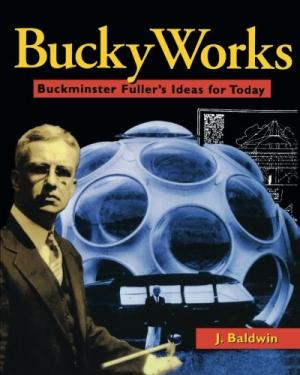 Cover of BuckyWorks, 1997 |
RH: I saw Fuller speak several times in the 1960s and by then he was already famous and had settled into a standard 3-5 hour lecture performance. I would guess that in the 1950s he was much more spontaneous and exploratory.
JB: Yes, very much so, and he made mistakes. Virtually all the mistakes he made - at least I thought so anyway - were because he had his prototypes made for him instead of making them himself. I have a book that's been out 20 years called BuckyWorks. It's still in production from John Wiley and Sons. I ran it past the man who wrote most about Fuller early on, to see what he thought of it, and he liked it so I went ahead and published it. Wiley asked me to write the book and they ran it through their fact checkers and it came out OK. The book has 250 photographs in it that hadn't been shown before. So when I show the book as a slideshow, I say I'll show you things you haven't seen before, knowing that almost nobody in the audience has seen them.
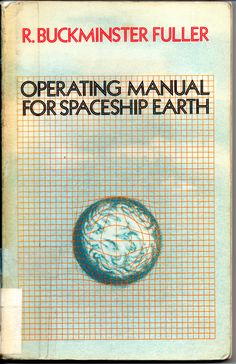
RH: What do you think of him now, his ideas and his impact? I know Stewart went through a re-evaluation of Bucky.
JB: Stewart went through a re-evaluation but replaced him with a philosopher. He got more turned on by Gregory Bateson. Bucky was very much into performance per pound. Bucky was really the first person who was aware that if we were to succeed as a species we were going to have to get alot better at using materials efficiently. Nature always uses matter and energy in the most efficient way and it helps alot to seek that way. One of the things that Bucky noticed in World War 2 was that the side that was capable of using materials more efficiently didn't have to use so much material so it was more likely to win in the end. I learned alot from him. He was such a fussbudget about efficiency. For instance in the design of a bicycle, the weight of the screws holding the bicycle together is important. Say you've got a bicycle and it only has 4 screws. My genie says what do they weigh? People don't want to hear that. Unless you had adventures making things, it's hard to see the importance of performance per pound because that's rarely visible.
RH: I suspect it was Fuller's ideas about World Design Science that captured Stewart's interest more than performance per pound.
JB: Stewart wasn't entirely free from the idea of performance per pound but he was more philosophical. Bateson came at performance from a very different standpoint. I like Gregory Bateson's stuff, too.
RH: Did Bateson and Fuller know each other?
JB: Yes.
RH: I wonder what they thought of each other.
JB: I don't know.
RH: How much time did you spend with Fuller? Because he was moving around alot and you were still a student.
JB: I went to dozens of his lectures in different locations.
RH: That suggests you were travelling with him. Is that right?
JB: Following him.
RH: You would see that he was scheduled to speak somewhere and then go there?
JB: Yeah. And I learned some tricks from him. For instance, when I was about to go up on the stage, he said I noticed you don't have any notes. And I said, if you really know your stuff, you don't need notes. And he said how do you get your listeners turned on, so their ears are listening to you? And I said, I do it the same way you do, and he cracked up. We laughed together because I had copied his style, which he learned from Merce Cunningham, the dancer.
RH: At Black Mountain College.
JB: Yeah, and it worked pretty well. I've had lots of people say to me, this is the first class I've ever taken that I was interested in. Yes, I said, this is the first class you've taken that was interesting to anybody.
RH: So by the time you got to San Francisco and were pulled in off the street, you were already used to lecturing without notes, based on what you had seen Fuller doing?
JB: Well, I had practiced it. I had given alot of lectures and people seemed to understand it.
RH: What I'm getting at was that they pulled you off the street to take over a big class that was full of expectations and you had no preparation, no syllabus, no textbook...
JB: None.
RH: ...so what did you do? How did you fill the time?
JB: I never use a syllabus. When someone wants to hire me and they say give us a syllabus, I say I never use a syllabus. If you already know what you're going to say, it's not going to grab the students. When I teach, I talk about what I'm working on. I'm always working on something. To come up with things that work well, it's a way of thinking about them like they are alive. One of the few claims I make is that I discovered why geodesic domes leak.
RH: Well, that wouldn't be a mystery. They've got so many seams that the water just creeps in at the edges, right?
JB: No. No, they leak because they expand and contract so they act as pumps. They pump the water through any gaps in the membrane. The efficiency of geodesics makes them leak efficiently, too. So you have to design that away. I tell people my domes don't leak, and they don't, because they can't. That's the only way to make sure they don't leak.
RH: Why can't they leak?
JB: You make them in a way that they can't leak.
RH: Lots of silicone?
JB: No, but that's tempting. I'm going to make this as simple as I can. When you make something water resistant, that doesn't mean it doesn't leak. That means it resists leaking. And if something is fire resistant, that means it's hard to light, but once burning it burns well, so you don't let it to get into burning mode. Domes are really clever. They're almost magically clever. I'm still arguing about how to think about them.
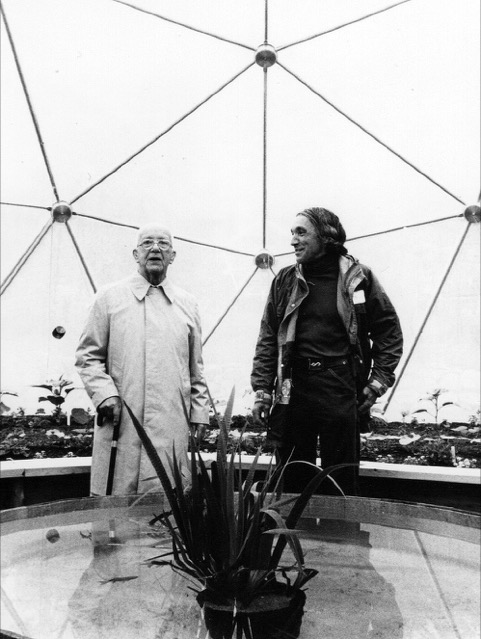
Photo by Phil Haggerty
RH: Lloyd Kahn's website has a very sharp critique of the whole dome concept, even though he was one of the main promoters of domes in the 1960s and 70s. He stopped that to focus on more traditional right-angle based architecture. Have you evolved that way, too?
JB: Yes. I happen to be a friend of Lloyd's but it has to be remembered that Lloyd was originally trained as a salesman. Lloyd's domes leaked because he didn't know how to make them not leak, and he actually had to tear them down, the ones that he built, cursing and insulting them as he did so, and insulting Fuller's work. We went round and round about this. I never hid what I was doing but I also never made a point of needling him or other dome makers. Even Bucky's domes leaked. In fact the worst leaking dome I've ever been in was the dome Bucky had built as his home at Southern Illinois University. I had a photograph I was going to use as the cover of my book, but I decided it was derisive. It was a photograph of him with a flashlight in his mouth, indoors in the rain. You could see it was raining outdoors, through the window. He was holding a book in one hand, reading it with the flashlight in his mouth, wearing a raincoat, indoors, in his own house. I came at him about that. I said your dome leaks. And he said domes don't leak unless you make them with holes. You wouldn't make a boat full of holes and expect it not to leak. And I said but you've done that yourself. Are you not wearing a raincoat indoors? Well, he said, I had this dome made for me by someone who's made hundreds of them. We went round and round about that. Bucky and I had alot of quarrels.
RH: Really? I would think he'd be hard to argue with.
JB: He was. I didn't argue with him until I had all my ducks in a row and then I shot em one by one.
RH: This issue of leaking domes reminds me of Stewart's How Buildings Learn, which I'm sure you've seen. He makes the point that architecture was corrupted by thinking of itself as an art instead of a craft, and he has a section in the last show of the BBC series talking about how leaks in modernist buildings refute their claim to be great architecture.
JB: Right, and one of the places where he discovered that was in our conversations about domes. It's hard to design a building that is really good, that is what it claims to be. Does this building leak? Is it going to leak in 30 years? As a designer you aim for completeness, for something that's finished and stays finished. Stewart's insight was that a building isn't finished until it's torn down. I worked next to him for 30 years at Whole Earth. One thing that was important about Whole Earth was that nothing was hidden. In fact, one of the first things Stewart did when we took over the building in Sausalito, he had all the doors removed. He had the doors taken off the rooms because he didn't want privacy.
RH: It's interesting that he didn't use the Whole Earth office at Gate 5 Road as an example in How Buildings Learn.
JB: There's no photograph of it in the book because it wasn't an unusual building.
RH: But he had a whole chapter devoted to anonymous, ordinary buildings and how important they are. He could have used it there.
JB: Yes.
RH: If you spent so much time with Stewart, and if you argued with Bucky, did you argue with Stewart, too?
JB: Oh, yeah.
RH: What did you argue about?
JB: Well, the first argument we had, Stewart red-lined an article that I'd written. We divided the Next Whole Earth Catalog into departments then each one of us took on a department. I took on Nomadics and Soft Tech. I especially liked Nomadics, which I thought was a nice name. He redlined something I had written and I gave it back to him. I said either I'm your editor for Nomadics or you are.
RH: He had not done that to you before?
JB: No. So later in the afternoon, I heard a plop on my desk and I looked over there and the article was on my desk and it was not changed. And it got printed just as I wrote it. That was our editorial agreement. We never talked about it. To put this in perspective, everything published by Whole Earth that was written or edited by me, I don't take it back. I only had one thing printed that in later years I thought was wrong and I had it changed when it was reprinted.
RH: What was that?
JB: It was related to why domes are great and why they leak or don't leak.
RH: It's interesting that you had that experience with red-lining because Stewart never changed anything that I wrote and I just thought that was the rule. Once I realised that he wasn't going to fix my mistakes, it made me a lot more careful as a writer because it's embarassing when you see something wrong go into print.
JB: We went round and round about other things that maybe we shouldn't have. He ended up thinking that Gregory Bateson was probably, over all, closer to the truth than Fuller. He and I talked alot about this and I finally said, you know, you may be right about this. But I'm still not sure.
RH: I don't know that it has to be an either or.
JB: No, I don't either.
RH: Two months after this interview was recorded, J. had a stroke and died on 2 March 2018.
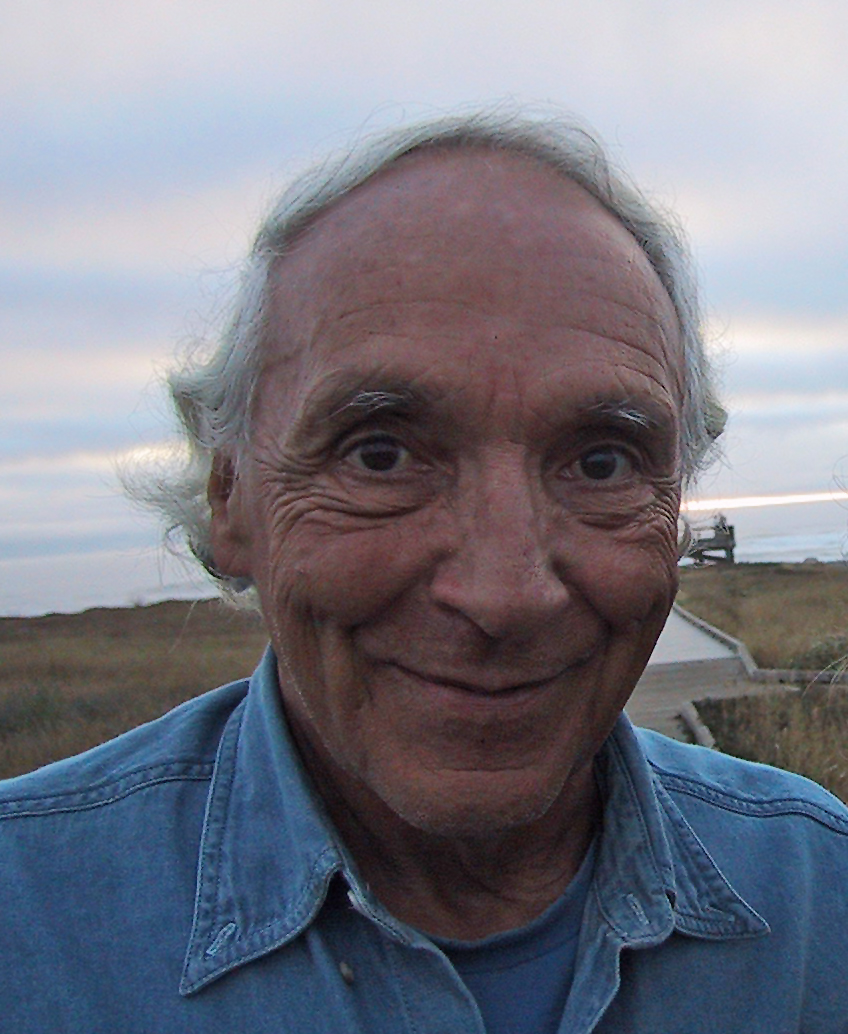
JB in 2004
